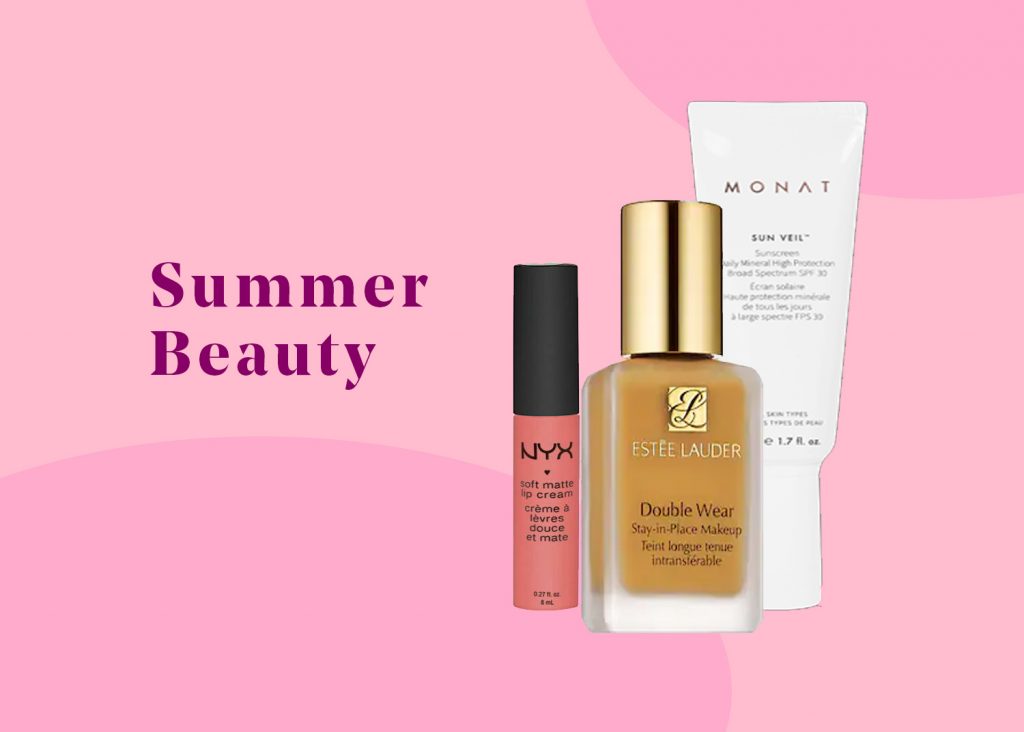There are a lot of misconceptions about sunscreens and skin protection floating around. Think you know all there is to know? Think again! Beauty expert Shobana has the perfect ways to test your knowledge with Sunscreen Fact or Fiction.
Statement #1: The SPF in your makeup gives you ample protection
SPF within makeup provides some protection and is good for layering. You need a quarter to half a teaspoon or the length of 2 fingers to cover your face, ears, and neck. Try sunscreen with makeup properties. Some examples are Super Goop Glow Screen and Tinted Sunscreens. Don’t forget to apply sunscreen as the last step of your routine. Let it set for 5-10 minutes before applying makeup.
TIP: Don’t forget your eyes, hairline, ears, neck, and anything exposed to the sun. Also, apply sunscreen 20-30 minutes before sun exposure.
Source: Allure
Statement #2: Wearing sunscreen is the best way to protect your skin from the sun
Wearing sunscreen doesn’t protect you 100% from the sun. You must be factoring in you may not apply enough or reapply often enough. Try to stay in the shade, wear a hat, wear sunglasses, and cover up. Layer in antioxidants to neutralize sun damage like Vitamin C.
Source: Amazon
Statement #3: You should wear sunscreen when spending the day inside
UVB rays make up only 5% of UV that reaches our skin. They are strongest during the summer and don’t penetrate windows. UVA accounts for 95% of all UV and is pertinent all year around. It can penetrate windows, cause cancer, premature aging, create hyperpigmentation, and cause tanning.
TIP: Make sunscreen a part of your daily routine so you never forget. Most sun damage is caused by incidental and unintentional daily exposure.
Source: Allure
Statement #4: SPF is the measure of how much protection you get from the sun’s UV rays
SPF (which stands for Sun Protection Factor) is the protection grade for UVB rays, not UVA. How do you know about the protective measure of UVA? UVA symbols, PA Ratings, or ask companies. Sunscreens with UVA Symbols are Bioderma, La Roche Posay, and Vichy. Sunscreens with PA are Neostrata, Murad, and Super Goop. In Canada, Broad Spectrum indicates protection but doesn’t tell you how much exactly.
TIP: If you are unsure about the level of UVA protection, contact the brand and inquire about the measure of UVA protection based on PPD or the PA system, apart from Broad Spectrum.
TIP: “PA” followed by plus signs on a label is a rating system originating in Japan to represent how much UVA protection the product offers.
Source: REI
Statement #5: If you have darker skin, you don’t need sunscreen
Popular opinion is that lower risk of cancer still present. Yes, you do get protection from melanin but how much? Skin tone doesn’t prevent premature aging and hyperpigmentation. People of color are more prone to hyperpigmentation
TIP: Still doubtful? Educate yourself. Consult a dermatologist and ask about the Fitzpatrick scale, which can be used to make assessment of risks based on skin tone.
Source: EverydayHealth
Statement #6. If you have sensitive skin, you should use a mineral sunscreen
2 types of sunscreens, chemical which absorbs rays and physical that reflects rays. Popular opinion is that mineral may be less irritating, especially in a non-comedogenic form. Do a patch test with sunscreen before determining the right one for you. It may take a few tries to see which suits your sensitive skin.
TIP: Consider fragrance free and oil free options
Source: Healthline
Statement #7. You can use sunscreens after the expiry date
The ingredients and filters can begin to breakdown deeming the sunscreen ineffective. It is best to not use expired sunscreen. You want to preserve your skin and provide it with the most effective product. Using expired sunscreen can create more harm then good if it fails to effectively protect your skin.
Source: Brush on Block










